Introduction:
In data management and backup, IBM’s Tivoli Storage Manager (TSM), now IBM Spectrum Protect, is vital. It ensures data is available, intact, and secure. One specific term that often arises in this context is “expirar data de un stgocopy TSM.” For TSM users, this concept is key. It is vital for managing storage pools and optimizing backups.
This blog post explores “Expirar Data De Un Stgocopy TSM.” It covers its meaning, implications, and efficient ways to handle it.
Breaking Down the Term
To fully comprehend the idea of “expirar data de un stgocopy TSM,” we must analyze its components:
- Expirar Data: It means to delete obsolete or unneeded data.
- Stgocopy: Short for “storage copy,” this denotes a copy of a storage pool in TSM.
- TSM (Tivoli Storage Manager): A tool for backing up and recovering data. It manages data across various storage devices, ensuring consistency and security.
The phrase implies the process of deleting or expiring data from a copy of a storage pool managed by TSM. This task is vital. It ensures we use storage efficiently. It also ensures compliance with retention policies. Lastly, it streamlines the backup system.
Why Is “Expirar Data de un Stgocopy TSM” Important?
In a dynamic IT environment, managing backup data efficiently is pivotal. Here’s why expiring data from a storage copy is a significant task:
- Optimizing Storage Space: Deleting expired or duplicate data frees up space for new backups. This reduces storage costs and avoids unnecessary hardware upgrades.
- Data Retention Policies: Organizations must keep data for a set time to follow laws. Expiring data ensures adherence to these policies.
- Improved System Performance: Deleting old data boosts TSM’s performance. It reduces the load on storage pools and speeds up backups and recovery.
- Cost Management: Storage media, whether on-premises or cloud-based, incurs costs. By expiring unnecessary data, organizations can manage costs effectively.
How Does Data Expiration Work in TSM?
TSM employs a sophisticated mechanism for managing data end. Here’s a thorough outline:
- Backup Policies and Retention Settings: TSM uses backup policies. They set data retention periods. These policies dictate when data becomes eligible for end.
- Identifying Expired Data: TSM identifies expired data during its end process. This includes data marked for deletion based on retention policies or storage constraints.
- Expiration Process:
- TSM’s expiration process scans the database to locate data eligible for deletion.
- The system checks dependencies to ensure that no critical data is inadvertently removed.
- Expired data is then purged from the storage pool or storage copy.
- Maintaining Storage Pool Copies: If a copy exists, the expiration process syncs data across the primary and copy pools. This keeps them consistent.
Best Practices for Managing “Expirar Data de un Stgocopy TSM”
To handle data with optimal results, follow these best practices:
- Define clear retention policies.
Your organization must have clear retention policies. They should meet business and regulatory requirements. Retention policies should specify:
- Data retention periods for different types of backups.
- Exceptions for critical or sensitive data.
- Procedures for updating policies as business needs evolve.
- Automate the expiration process
Leverage TSM’s built-in automation capabilities to schedule regular end processes. Automated end reduces manual effort and ensures timely data purging.
- Monitor Expiration Activities
Use TSM’s reporting tools to check end activities. Conduct a thorough review of logs and reports to identify:
- Errors or failures during end.
- Patterns in expired data to refine retention policies.
- Storage use trends.
- Validate Dependencies Before Expiration
Prior to expiring data, validate dependencies to confirm that critical data remains intact. TSM’s dependency validation features can assist in this process.
- Test Expiration Processes in a Controlled Environment
Test the expiration process on production data in a controlled environment. Do this before using it. This reduces the risk of accidental data loss.
- Regularly Update Policies and Procedures
As business needs and regulations change, update your data retention and expiration policies. This will keep you compliant and efficient.
Challenges and Solutions
Managing “expirar data de un stgocopy TSM” can be complex, with several challenges:
Challenge 1: Misconfigured Retention Policies
Badly set retention policies can cause early data deletion or excessive retention.
Solution: Regularly audit and validate retention policies. Ensure they meet organizational requirements.
Challenge 2: Performance Impact During Expiration
The expiration process can be resource-intensive, potentially impacting system performance.
Solution: Run expiration processes during low-usage times. Use TSM’s tuning tools to optimize database performance.
Challenge 3: Data Dependencies
Unaccounted dependencies can result in accidental data loss.
Solution: Leverage TSM’s dependency validation and perform thorough checks before expiring data.
Challenge 4: Lack of Visibility
Inadequate monitoring can lead to missed expiration opportunities or overlooked errors.
Solution: Use strong monitoring and reporting to track the expiration process.
Real-World Applications
Let’s consider a scenario where “expirar data de un stgocopy TSM” proves beneficial:
Scenario: A financial institution manages massive volumes of transaction data. Due to regulatory requirements, they must keep data for seven years. But, we must purge data older than seven years. This is to follow regulations and optimize storage.
Implementation:
- The institution defines retention policies specifying a seven-year retention period.
- We automate expiration processes to identify and delete data older than seven years.
- Regular audits ensure compliance with retention policies.
The institution reduces costs, boosts performance, and meets regulations by expiring data.
Tools and Resources for “Expirar Data de un Stgocopy TSM”
IBM Spectrum Protect provides various tools to facilitate data expiration:
- Policy Management: For defining and managing retention policies.
- Automated Schedules: To automate expiration processes.
- Reporting Tools: For monitoring and analyzing expiration activities.
- Database Utilities: To optimize database performance during expiration.
Conclusion
“Expirar data de un stgocopy TSM” is key to data management in IBM Spectrum Protect. Organizations can optimize storage, ensure compliance, and back up data. They can do this by knowing its importance, following best practices, and using tools. Managing a small IT system or an enterprise-grade one? Then, mastering data expiration is a must for any TSM admin.

